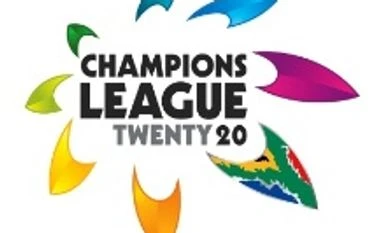In his statement to the media, Board of Control for Cricket in India (BCCI) Secretary Anurag Thakur clearly spelt out the reason behind the decision. He said: “Unfortunately, off the field, Champions League T20 wasn’t sustaining the interest of the fans as much as we had hoped. This decision was made after consultation with all our commercial partners and meeting the contractual obligations of all parties involved.”
Thakur’s statement seems to shed light on the larger forces playing out in the cash-strapped world of domestic Twenty20 league tournaments.
Here’s a look at what ails domestic league, drawn from the Champions League T20 story.
The beginning
Following IPL’s phenomenal success in its launch year, 2008, BCCI joined hands with cricket bodies across six other nations to establish a world championship of Twenty20 league teams. And the Champions League T20 was born.
The year 2008 then saw the cricketing bodies taking a decisive step towards establishing a cricket championship akin to the glamorous world of league tournaments and rivalries that characterise global football.
IPL proved to be the milch cow for BCCI, already the world’s richest cricketing body. The other national bodies wanted a bite of the pie, too. Even as Sri Lanka, Bangladesh and West Indies initiated their own IPL-style leagues, and Pakistan and Australia upgraded their own, it was clear the BCCI-operated IPL outdid them all in terms of both revenue and glamour.
The progress
CLT20 also became a way for other cricketing bodies to bask in the IPL-generated hype — that clearly was the intent. Also, BCCI’s influence over the others ensured the tournament always had India at its centre. Though there were 12 teams from seven countries in the first season, IPL sent more teams than the other leagues. India hosted the tournament.
The poor cousin
The interest in CLT20 seemed lacking right from the start. This was despite the tournament featuring what was claimed to be the biggest prize money in the history of club cricket tournaments — $2.5 million.
The response to CLT20 could never match IPL’s in terms of viewership or the moolah involved. There were two key reasons for this.
The first was the postponement of the first season by a year — from 2008 to 2009, thanks to the 26/11 Mumbai terrorist attack. To make up for the loss, BCCI had to pay $5 million each to the Chennai Super Kings and Rajasthan Royals franchisees; no other team was provided any compensation.
The second reason was the lacklustre performance of Indian teams in CLT20. The matches that did not feature Indian teams saw empty stadiums. According to a Scroll.com report, the league could achieve a TAM Media Research TV viewership rating of 1.06 in 2009, much lower than the 4.1 that IPL got.
The star power
So far as IPL is concerned, with Bollywood stars buying teams and viewers identifying better with their region-based teams, there was a greater connect to begin with. That helped IPL grow fast. Such identification was completely missing in the case of CLT20, where little-heard-of domestic teams of, say, South Africa or Australia, would be playing.
While popular actors like Shah Rukh Khan, Preity Zinta and Shilpa Shetty added to IPL’s glamour, CLT20, trying to hold its own, failed miserably. Indian viewers’ interest remained confined to the matches where IPL teams were playing — and that, too, only for matches at the later stage of the tournament.
The financial strain
The financial strain soon began to show. After the second season, when even a CSK title triumph failed to raise the TRPs to the IPL level, title sponsor Bharti Airtel decided to withdraw from its five-year sponsorship deal. Nokia agreed to fill the gap with a four-year deal but pulled out after just one year.
IPL continued to dominate the power equations. To boost ratings for CLT20, one more IPL team was roped in from 2011, even as two more featured in the qualification round. This ensured Indian teams did better in the tournament more often. India would also host most of the editions.
No display of power helped
The Indian cricket board went a step further and ensured if two team for which a player belongs qualified for CLT20 — New Zealand’s Ross Taylor and South Africa’s Jacques Kallis, for example — the player must play for the IPL team.
In another shocking display of power that alienated many other teams and boards, IPL’s Mumbai Indians team was in 2011 allowed to play five foreign players, instead of the stipulated four, owing to the injury of eight of its own players.
The tournament was also criticised for its poor timing, clashing with England’s home seasons, and preventing its teams from participating for three years: 2010, 2011 and 2012.
Finally, the tournament also came to be heavily dominated by South Africa, Australia and India. Not only did the teams from these countries dominate the championship and the knock-out stages, they also had a larger representation overall. According to an indiatimes.com report, in a 10-team tournament, the spots of eight teams were already fixed. Four Indian teams, two Australian and two South African teams. The remaining two spots would be taken by teams from West Indies, New Zealand, Pakistan and Sri Lanka.
Barring the 2014 edition, in which one Indian team was knocked out in the qualifiers, the disproportionate representation was one of the main reasons why the tournament never had the appeal.
It might seem, with IPL, the overall packaging of cricket tournaments has weighed over actual cricketing actions — player auctions and opening ceremonies have become as important (if not more) for pulling crowds as the slog-fests themselves. However, it is believed, this very display of extravaganza, besides the niggling share of controversies across IPL seasons, went on to reduce viewerships for T20 tournaments — mainly for CLT20, and also for IPL to an extent.
)